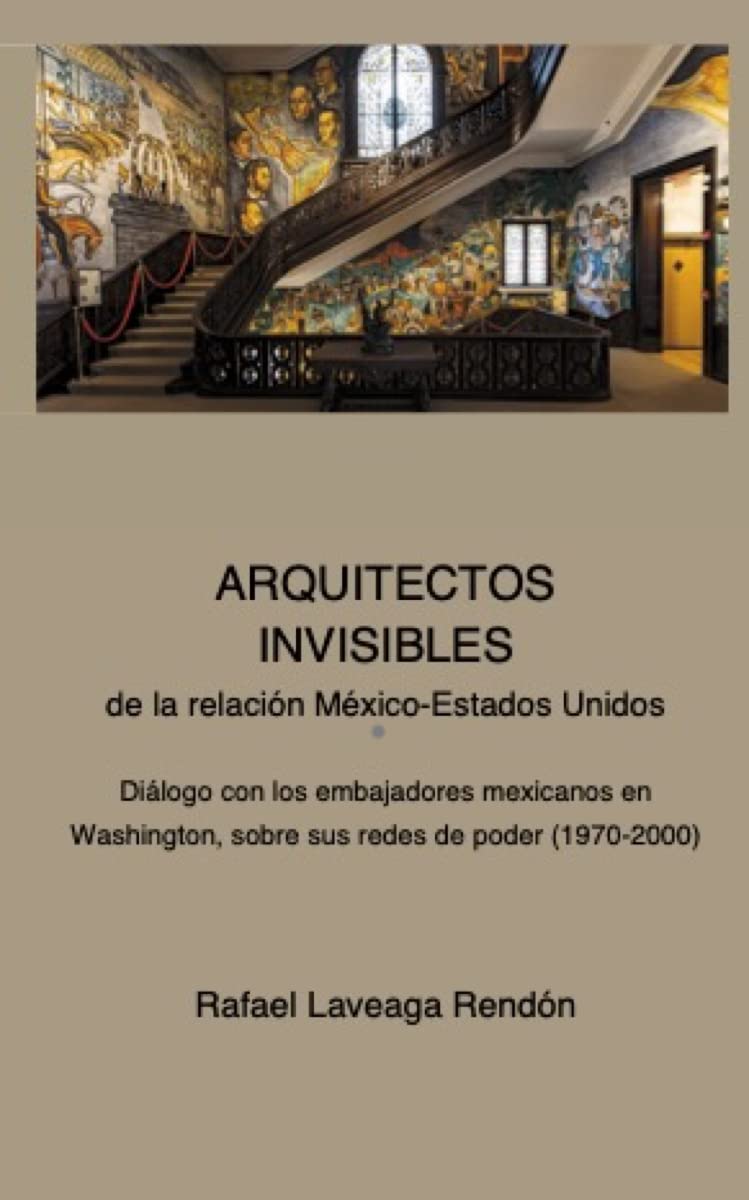

![]() Felipe García Landa
Felipe García Landa
 Invisible architects of the Mexico-United States relationship, Rafael Laveaga Rendón, Washington, DC, Jorge Pinto Books, 2023, 169 pp., US$15.00.
Invisible architects of the Mexico-United States relationship, Rafael Laveaga Rendón, Washington, DC, Jorge Pinto Books, 2023, 169 pp., US$15.00.lThe complexity of the relationship that Mexico has with the United States is explained, in part, by the large number of actors, including government officials at all levels, who interact on a daily basis. Almost daily, representatives of the Mexican presidency and the various state secretaries, governors and mayors, as well as members of the armed forces and police corporations, diplomatic and consular agents, among many others, give shape and content to the relationship. bilateral.
Academic and journalistic analyzes usually privilege the interaction between the heads of state and government of each country, over the meetings that occur between other government officials. In that sense, Rafael Laveaga, author of “Invisible architects of the Mexico-United States relationship”describes the relationship from the perspective of one of the most relevant and, at the same time, little studied figures: that of the ambassador.
Laveaga, a career diplomat of the Mexican Foreign Service (SEM) stationed in Washington, DC, frames the figure of the ambassador and the actions of the people who have held this position as a fundamental link in the ties between both governments. According to the author, ambassadors are architects who work mainly outside the spotlight, which is reserved for their superiors in Mexico City.
The work is composed of two elements: a series of interviews with the Mexican ambassadors in Washington, DC, from 1970 to 2000, and a quantitative and qualitative analysis of said meetings. The author spoke with nine representatives of Mexico in the United States: seven ambassadors and two heads of the Foreign Ministry, through the application of a standardized, but flexible questionnaire, which fostered fluid and enjoyable conversations. The writing is original and unrepeatable, not only because of its approach—a perspective in the voice of the protagonists—but also because several of these characters died after Laveaga spoke with them in 2001.
lThe interviews include historical details and personal anecdotes that show committed officials who played a relevant role in cooperation and in the resolution of disputes on all issues on the bilateral agenda: drug policy and the fight against organized crime; border security and migration; hemispheric politics, especially in Central America; trade and investment, among others.
lThe conversations also expose how the ambassadors are also the leaders of a broad organization in Washington, DC, which includes members of the SEM, temporary diplomatic staff, support teams and attachés from both the armed forces and other government agencies. The US capital is the only city that has representatives from the various ministries of State, which gives the ambassador a unique ability to convene, agree and conciliate among his peers.
A quantitative and qualitative analysis emerges from the interviews that allows the author to provide a series of data and conclusions about the role of the ambassador and the characteristics of those who head the embassy. For example, Laveaga finds that seven studied at the Autonomous National University of Mexico and two at ITAM; that five were lawyers and four economists; that the majority specialized in finance, among other interesting aspects. It highlights that the vast majority of embassy holders are not part of the diplomatic career. Of those interviewed, only one—Jorge Montaño—was a member of the SEM; the rest were “political” appointments.
The most extensive analytical chapter is dedicated to the triangular relationships between the president, the chancellor and the ambassador. This is mainly explained because, although the Secretary of Foreign Affairs is normatively the ambassador’s hierarchical superior, the majority of them declared “friendship with the president before being appointed in Washington, which shows direct access (to the president).”
lThe relationship with the Foreign Ministry is therefore complex and variable, since some ambassadors are more institutional in their relationship with the secretary, while others privilege or take more advantage of the personal relationship with the head of the executive or with some officials of the presidency. This situation reaches such a point that, Laveaga narrates: “On several occasions,” he told me, off the record one of those interviewed in this study—the president gave an order to the ambassador, expressly requesting that the Secretary of Foreign Affairs not be informed of this.”
In the end, Laveaga writes about the appointments of the new President of Mexico, especially those related to the new representative of her government in Washington, DC. Such designation is one of the most important decisions of a nascent government, due to its significant role for the bilateral relationship. He also explains that one of the natural factors for the election is personal closeness with the head of the executive. If the pattern evident in Invisible Architects continues, this element will be crucial to define who will take ownership of the Mexican embassy in the United States.